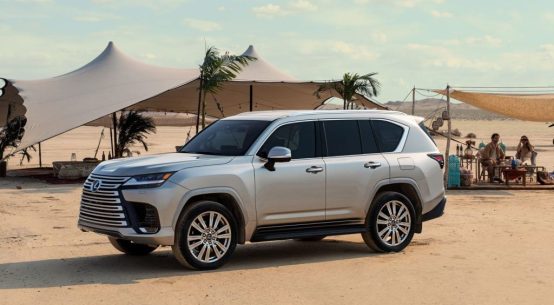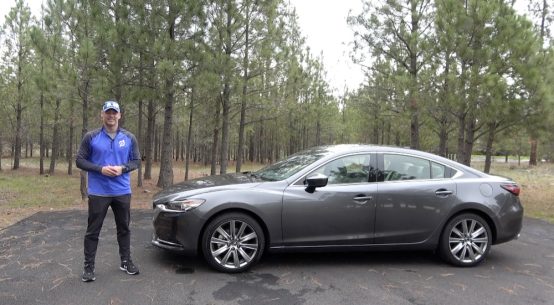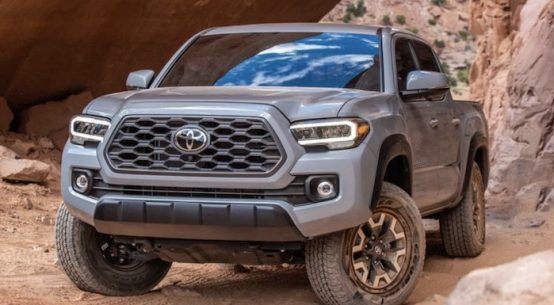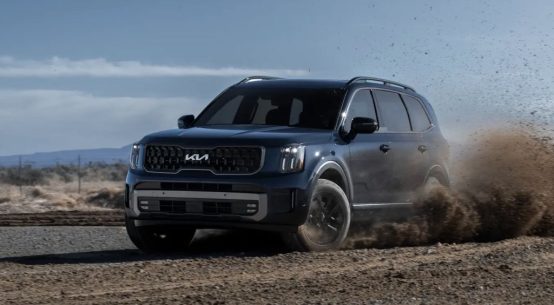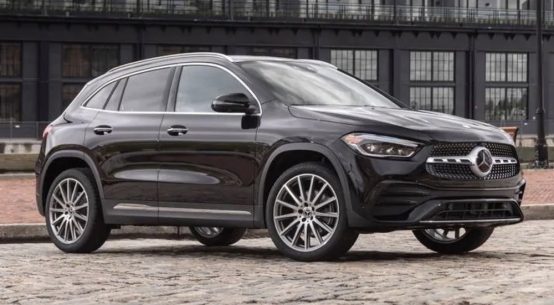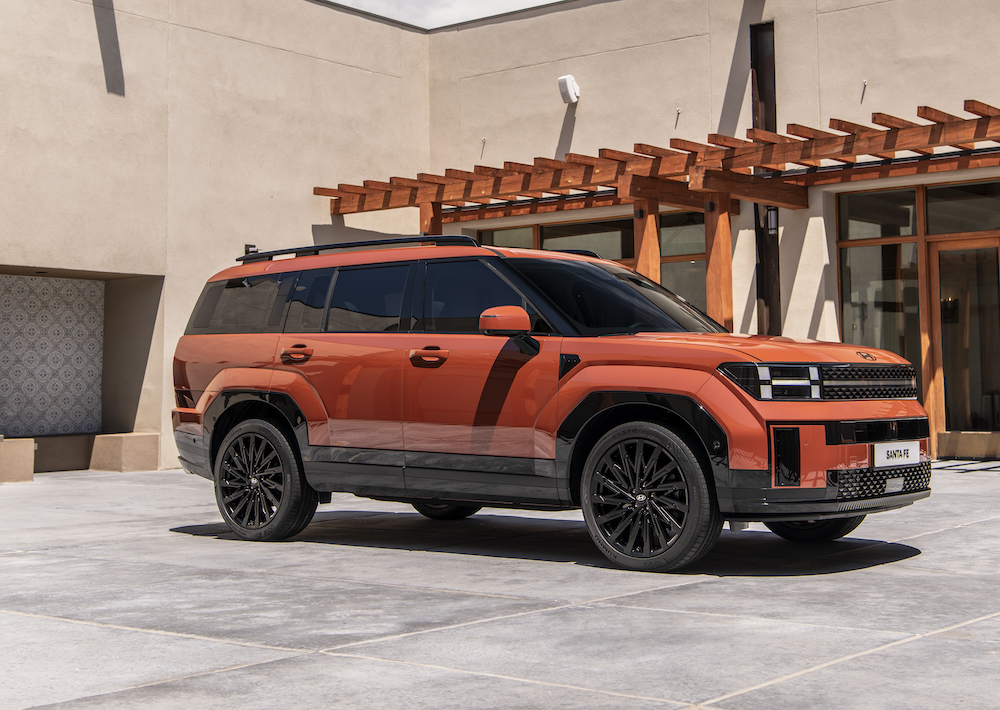
The 2024 Hyundai Santa Fe has undergone a profound redesign that stands out for its revolutionary changes. The previous iteration of the Santa Fe featured a conventional midsize SUV design characterized by rounded edges, which softened the appearance of the essentially boxy utility vehicle. However, the new 2024 Santa Fe takes a completely different approach, embracing sharp corners that accentuate its straight lines. Beyond its eye-catching aesthetics, the updated Santa Fe boasts an increased length between its front and rear wheels, resulting in more space for both passengers and cargo. Unlike its predecessor’s two-row setup, the new Santa Fe will introduce a third row of seating, marking a departure in configuration. The implications for the existing three-row Palisade in Hyundai’s lineup remain uncertain. For the time being, both models will cater to up to eight occupants. Notably, Hyundai emphasizes that the Santa Fe’s seats can fold completely flat, optimizing cargo capacity when necessary.
Internally, the design echoes the exterior with its expansive flat surfaces and sharply defined edges. A gracefully curved panoramic display unit merges the instrument panel with a 12.3-inch touchscreen user interface. Additional controls are conveniently positioned just below and ahead of the center console, which offers dual wireless charging pads. Specifics regarding the powertrains for the new Santa Fe have not been disclosed by Hyundai, but preliminary images reveal a “2.5T” emblem, implying that the current model’s 2.5-liter turbocharged four-cylinder engine might be retained as an option when the updated Santa Fe hits the market in late 2023.
Details concerning pricing and trim levels for the redesigned 2024 Santa Fe have yet to be revealed by Hyundai. The 2023 version is available in five variations for the gasoline model, four for the hybrid variant, and two for the plug-in hybrid. Current pricing spans from $30,000 to $49,000, and it’s likely that the new Santa Fe will follow suit, ensuring its attractiveness to a diverse range of prospective buyers. While it’s anticipated that the 2024 model will come with a higher price tag, the extent of this increase remains uncertain until it’s established whether all three powertrain options will persist in the updated lineup.
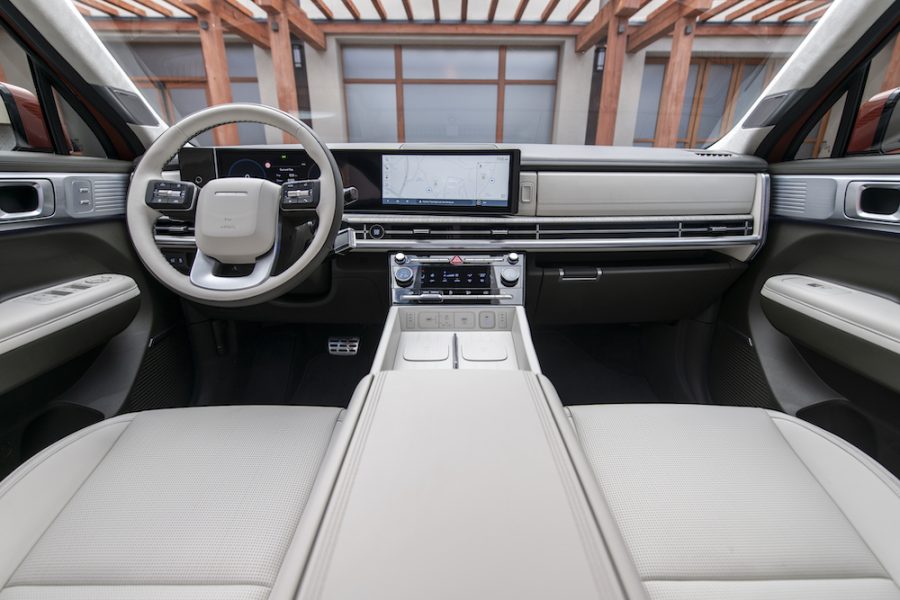
Formal information about the powertrains for the 2024 Hyundai Santa Fe is still pending. Clues about what’s in store can be gleaned from initial photographs displaying “2.5T” and “HTRAC” badges. This hints at the possibility that the new Santa Fe might carry over the existing model’s 277-horsepower turbocharged four-cylinder engine, with all-wheel drive remaining an available choice. Given the larger dimensions of the new Santa Fe, the turbocharged 2.5-liter engine could potentially serve as the base powerplant, as a non-turbo version might struggle to propel a Santa Fe loaded with eight passengers and their belongings. Additionally, the likelihood of a hybrid version is strong, taking into account the current model’s two available hybrid iterations.
Fuel efficiency for the 2024 Hyundai Santa Fe cannot be accurately projected until the array of powertrain choices is unveiled. The 2023 Santa Fe secures middling ratings compared to its rivals, achieving 25/28 mpg in city/highway driving for its most economical gasoline-engine model. Meanwhile, the Santa Fe Hybrid attains ratings of 36/31 mpg, and the plug-in hybrid model achieves 76 MPGe and a range of up to 31 miles solely on electric power. It’s reasonable to anticipate that the new Santa Fe variants will demonstrate enhancements in these figures. This is evident from the redesigned Toyota RAV4 Prime (introduced in 2021), which achieves an impressive 94 MPGe and can journey up to 42 miles using battery power exclusively.
The 2024 Hyundai Santa Fe boasts a contemporary and sleek cabin design, firmly establishing its presence in the modern era. Hyundai describes the interior as offering “spacious living area.” While specific interior measurements are pending, the elongated wheelbase of the new Santa Fe suggests roomier accommodations. Confirmed features include fully foldable second- and third-row seats, along with the use of sustainable materials throughout the cabin. Elements such as the suede headliner, floor mats, and rear seatbacks are fashioned from recycled plastic.
In terms of cargo capacity, the 2023 Santa Fe already outperformed many competitors, with 36.4 cubic feet of space behind the rear seats, expandable to 72.1 cubic feet by folding down the rear seats. The updated Santa Fe is expected to offer even greater cargo capacity due to its new boxy design, which optimizes rear cargo space.
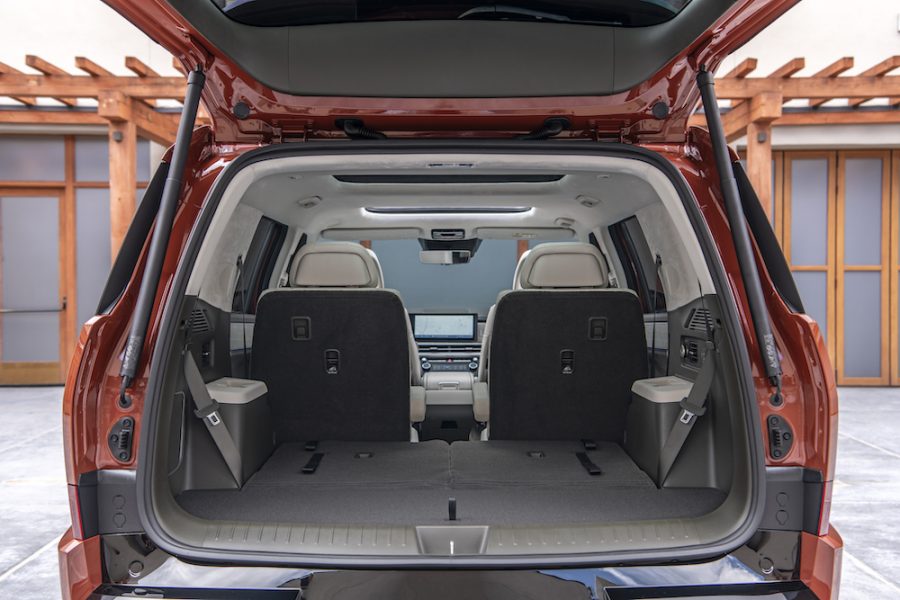
Highlighting the 2024 Hyundai Santa Fe are a range of advanced technological features, including a panoramic curved display unit uniting two 12.3-inch screens—one for driver information and the other for infotainment purposes. The presence of dual wireless charging pads is also anticipated. While specifics about features on the base model and higher trim levels are still pending, the 2023 Santa Fe’s upper trims employ a 10.25-inch touchscreen for infotainment, coupled with a standard Harman Kardon audio system, indicating the likelihood of a premium sound system being offered on higher-tier models.
Recent Hyundai models have established a strong track record in terms of safety, and it’s probable that the redesigned 2024 Santa Fe will continue this tradition. The 2023 Santa Fe garnered the highest five-star rating from the National Highway Traffic Safety Administration (NHTSA), while the Insurance Institute for Highway Safety (IIHS) awarded the model a top score of “Good” across all crash tests. Standard safety features for all trim levels of the 2024 Santa Fe are projected to encompass forward-collision warning with automatic emergency braking, lane-keeping assistance, a rearview camera, and automatic high beams. It’s also expected that the revamped SUV will incorporate additional driver-assist technologies.

